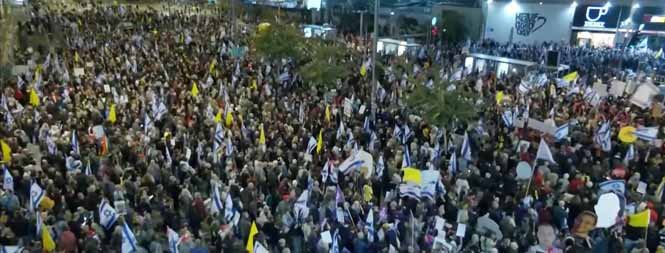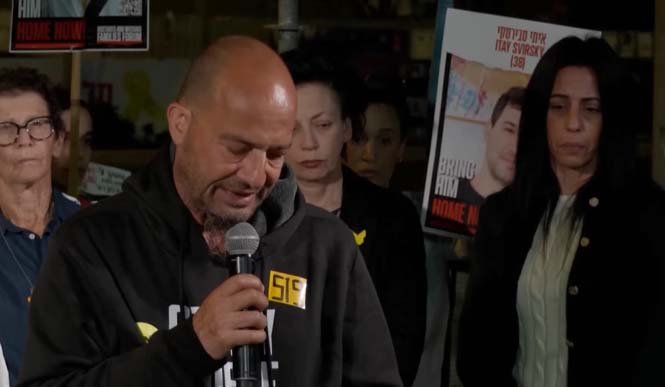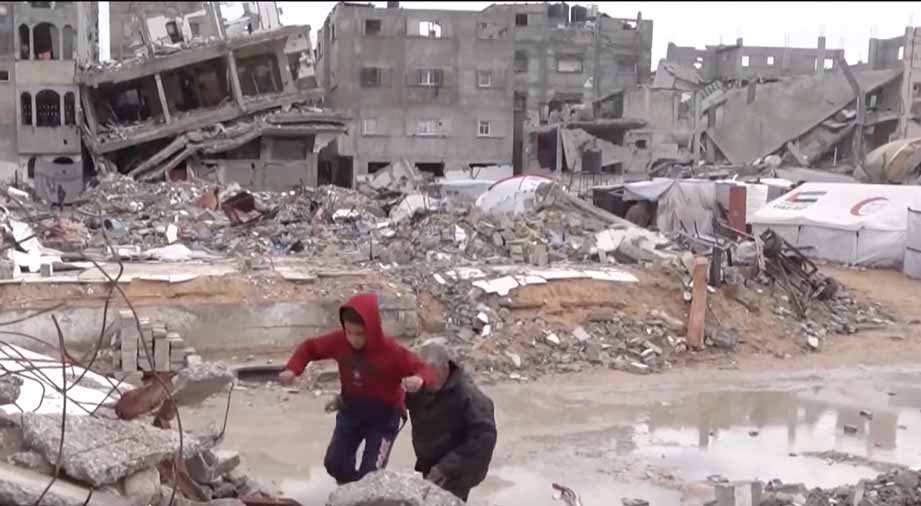GAZA City: In Gaza, the hum of drones has evolved into a continual soundtrack, a dismal reminder of the violence that has returned with terrible fury. Israeli airstrikes have battered the enclave, killing scores, uprooting families, and spreading hopelessness among Palestinians already hurting from months of conflict just days after preliminary discussions promised a stop in combat.
Described by the United Nations as “catastrophic,” the current escalation has destroyed fragile hope generated by indirect negotiations between Israel and Hamas. Civilians are left to negotiate a terrain of destruction, loss, and limited survival choices while mediators from Egypt, Qatar, and the United States try to heal divisions.
Escalation Notwithstanding Diplomacy: a Cycle of Violence
Al Jazeera claims that throughout a single 24-hour period this week, at least 47 Palestinians—including 14 children—were murdered as Israeli troops struck what they identified as “Hamas operational sites” in Gaza City and Rafah. The strikes target a UN-operated school, a residential building, and a packed market, so enhancing claims of indiscriminate force.
“We thought the worst was over,” said Amal Hassan, a 32-year-old mother of three, her voice cracking as she dug through the wreckage of her home in Khan Younis. “There is nowhere left to run now.” Her story mirrors thousands of others in Gaza, where over 80% of the population is displaced, according to UNRWA.
Israel’s military maintains the strikes are necessary to dismantle Hamas’ infrastructure and secure the release of hostages taken during the group’s October 7 attack. “We are targeting terrorists, not civilians,” stated IDF spokesperson Lt. Col. Peter Lerner in a briefing cited by The Times of Israel. Yet, Gaza’s Health Ministry reports over 38,000 Palestinian deaths since the war began, with women and children comprising 70% of casualties.
Ceasefire Talks Collapse: Why Diplomacy Stalled
Hopes for a truce briefly flickered this week when Hamas suggested flexibility on key demands, including the phased release of hostages. However, Israeli Prime Minister Benjamin Netanyahu rejected the idea, calling it “unworkable” owing to Hamas’ insistence on a permanent ceasefire and full Israeli disengagement.
A report by Reuters exposes internal differences inside Israel’s war cabinet, with Defense Minister Yoav Gallant pressing for a deal while far-right coalition members threaten to topple the government if concessions are made.
Meanwhile, Hamas leaders accuse Israel of negotiating in bad faith. “They want surrender, not peace,” senior official Basem Naim told The Guardian. The stalemate has left mediators exasperated. “Both sides are entrenched,” an Egyptian official involved in the talks told AP News on condition of anonymity. “Without urgent international pressure, this war could drag on for months.”

Human Toll Mounts: ‘We Live in a Nightmare’
In Gaza’s congested hospitals, the human cost of the deadlock is acute. At Al-Aqsa Martyrs Hospital in Deir al-Balah, Dr. Mahmoud Al-Saadi works 20-hour shifts treating burns, shrapnel wounds, and severe malnutrition. “We’ve run out of anesthesia and antibiotics. Children are dying from infections that should be treatable,” he said, his exhaustion palpable. The World Health Organization says that 90% of Gaza’s population risks extreme food insecurity, with famine looming in the north.
For 9-year-old Ahmed, who lost both parents in an airstrike, survival rests on foraging for scraps. “I just want to eat bread without hearing bombs,” he whispered to a UNICEF aid worker. His plea underscores a broader crisis: 625,000 children in Gaza are “trapped in hell,” Save the Children reported this week.
Global Reactions: Condemnation and Complicity
The international community remains sharply divided. While the U.S. continues to arm Israel, President Biden recognized “missteps” in a recent press conference, declaring, “Civilian suffering is unacceptable.” Conversely, Arab nations like Jordan and Egypt have condemned the strikes as “collective punishment,” with Jordan’s foreign minister calling for an immediate arms embargo on Israel during a BBC interview.
In contrast, the European Union has faced criticism for its muted response. Ireland and Spain led a coalition of nations recognizing Palestinian statehood last month, a symbolic move that highlights growing impatience with the status quo. Yet, as Politico notes, EU-wide sanctions against Israel remain unlikely due to vetoes from pro-Israel member states.
Regional Fallout: Escalation Risks
The conflict’s ripple effects are destabilizing the broader Middle East. Hezbollah and Israeli forces exchange daily fire along Lebanon’s border, displacing 150,000 people on both sides. In Yemen, Houthi rebels continue targeting Red Sea shipping lanes, vowing to persist until Gaza’s siege ends.
“This isn’t just Gaza’s war anymore,” said Randa Slim of the Middle East Institute in a CNN analysis. “Every day it continues, the risk of a regional explosion grows.”

Glimmers of Resistance: Grassroots Activism
Amid the gloom, grassroots movements offer slivers of hope. In Tel Aviv, thousands of Israelis joined protests demanding a hostage deal, clashing with police outside Netanyahu’s residence. “Our government is abandoning both Palestinians and Israelis,” said activist Talia Levin, quoted by Haaretz.
In Gaza itself, clandestine volunteer networks risk bombardment to distribute food and medical aid. “We’re all we have,” said volunteer Umm Mohammad, who declined to give her real name for safety. “No one else is coming to save us.”
What Comes Next?
With ceasefire hopes dim, analysts foresee a protracted conflict. Michael Stephens, a RUSI fellow, told Sky News that Israel’s goal of “total victory” over Hamas is unrealistic. “You can’t bomb an ideology out of existence,” he said.
For Gaza’s civilians, the path forward is unimaginable. “I don’t care about politics anymore,” said Amal Hassan, cradling her surviving son. “I just want to wake up from this nightmare.” As the world watches, the question remains: How many more must die before the guns fall silent?
Related Video:
Sources:
- Al Jazeera: Casualty figures and strike locations.
- UNRWA: Displacement statistics in Gaza.
- The Times of Israel: IDF statements on military operations.
- Reuters: Details on Israeli cabinet divisions.
- The Guardian: Hamas official quotes and political stance.
- AP News: Diplomatic insights from ceasefire negotiations.
- World Health Organization (WHO): Medical supply and famine warnings.
- UNICEF: Testimonies on child welfare in Gaza.
- Save the Children: Data on children impacted by the conflict.
- BBC: Jordanian foreign minister’s remarks.
- Politico: EU policy analysis.
- CNN: Regional escalation risks and expert commentary.
- Haaretz: Israeli protestor quotes.
- Sky News: Analyst assessment of conflict trajectory.
Explore More:
- Witkoff Meets Hamas, Qatar Mediators on Hostage Deal Progress
- Russia’s Bold Mediation Sparks Hope in US-Iran Standoff
- Arab Leaders Hold Urgent Summit to Tackle Gaza Crisis Plan
- Emergency Arab Summit On Gaza: Key Decisions & What To Know
- Israel Confirms 8 Hostages Dead, Legal and Global Reactions
- Gaza Ceasefire Brings Hope Amid Hostage Crisis Turmoil
- Netanyahu and Biden Advance Gaza Ceasefire-for-Hostages Negotiations
- Trump’s Hostage Ultimatum Deepens Gaza’s Despair
- Bibas Family Slams Netanyahu: Shiri, Ariel & Kfir Murders Exposed

